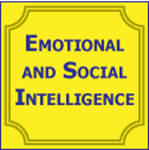You have no items in your shopping cart.
eBooklets with Test
Eating Disorders - Ebooklet
Identifies the proper classification, co-morbidities, and diagnostic approaches to eating disorders. Outlines the etiology and prognosis in eating disorders. Discusses the issues of oromaxillary pathology observed in eating disorders. Describes the various aspects of effective management of eating disorders. Explains the unhealthy weight obsession, self-image issues, and erroneous beliefs about food, diet, weight, and health.
$25.00
Emotional & Social Intelligence - Ebooklet
Explains the concept of emotional intelligence. Describes the relationship between emotions and the brain. Outlines how to use emotional intelligence to reduce negative moods. Explains the concept of social intelligence and its components. Identifies the neural circuitry underlying interpersonal behavior. Describes educational programs designed to heighten emotional and social intelligence.
$25.00
Emotions, Moods, & Pain - Ebooklet
Lists and describe the six basic emotions that have unique facial expressions. Explains the difference between emotions and moods. Discusses the relationship between emotions, moods, and pain. Identifies brain structures and neurochemicals that play a role in both moods and pain. Discusses the relationship of pain to both acute stress and chronic stress. Lists the similarities between stress management and pain management. Identifies the similar brain areas involved in both physical and emotional pain. Explains the interactions between anxiety disorders, depression, and pain. Discusses cognitive behavioral therapy and its role in pain management.
$25.00
Gluten & the Brain - Ebooklet
Discusses the role of gluten in celiac disease and non-celiac glucose sensitivity. Lists the main food sources of gluten. Identifies the neuropsychiatric components of the gut-brain link to gluten sensitivity. Describes the possible role of the microbiome in gluten sensitivity. Lists the components of a gluten-free diet. Identifies the potential disadvantages of eliminating gluten from the diet.
$25.00
Irritable Bowel Syndrome - Ebooklet
Identifies the differences between functional gastrointestinal disorders and inflammatory bowel diseases. Explains the pathophysiology of irritable bowel syndrome (IBS) and identifies appropriate treatment strategies. Discusses the pathophysiology of Crohn’s disease and ulcerative collitis and identify appropriate treatment strategies. Identifies psychosocial issues in chronic gastrointestinal disorders. Discusses new research on the causes of gastrointestinal disorders, such as peptic ulcer disease.
$25.00
Keeping Balance & Preventing Falls - Ebooklet
Lists causes and health hazards of falls. Outlines methods of preventing falls among the elderly. Lists the techniques for improving balance among the elderly. Describes procedures to prevent falls and reduce the risks of injury.
$25.00
Knee Pain - Ebooklet
Describes the anatomical structure of the knee. Identifies the different types of knee injuries and their manifestations. Describes the difference between major and minor injuries and the causes of knee pain. Explains strategies for preventing knee pain. Discusses the medical and surgical options now available to treat knee pain/injury.
$25.00
Loss of Control: Fighting Back with Full Strength - Ebooklet
Describes the issues related to stress-induced feelings of loss of control, the physiological and psychological mechanisms behind these issues, and means of coping with them. Identifies grief-, aggression- and suicide-related trends in both society and the individual and identifies the neurobiologic mechanisms involved. Develops approaches to the rehabilitation of patients who have loss of control issues that lead to substance abuse. Identifies patients at risk for disorders that may be triggered by the feeling of loss of control.
$25.00








